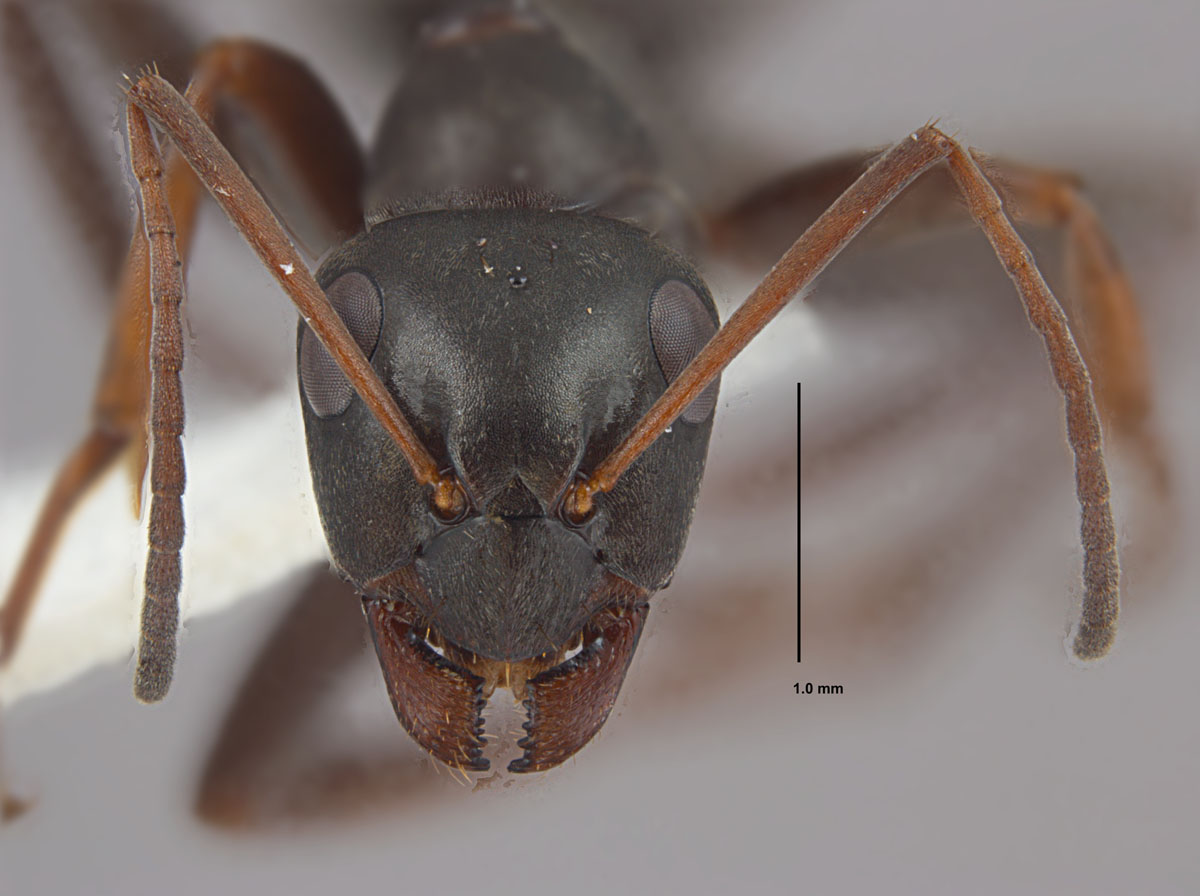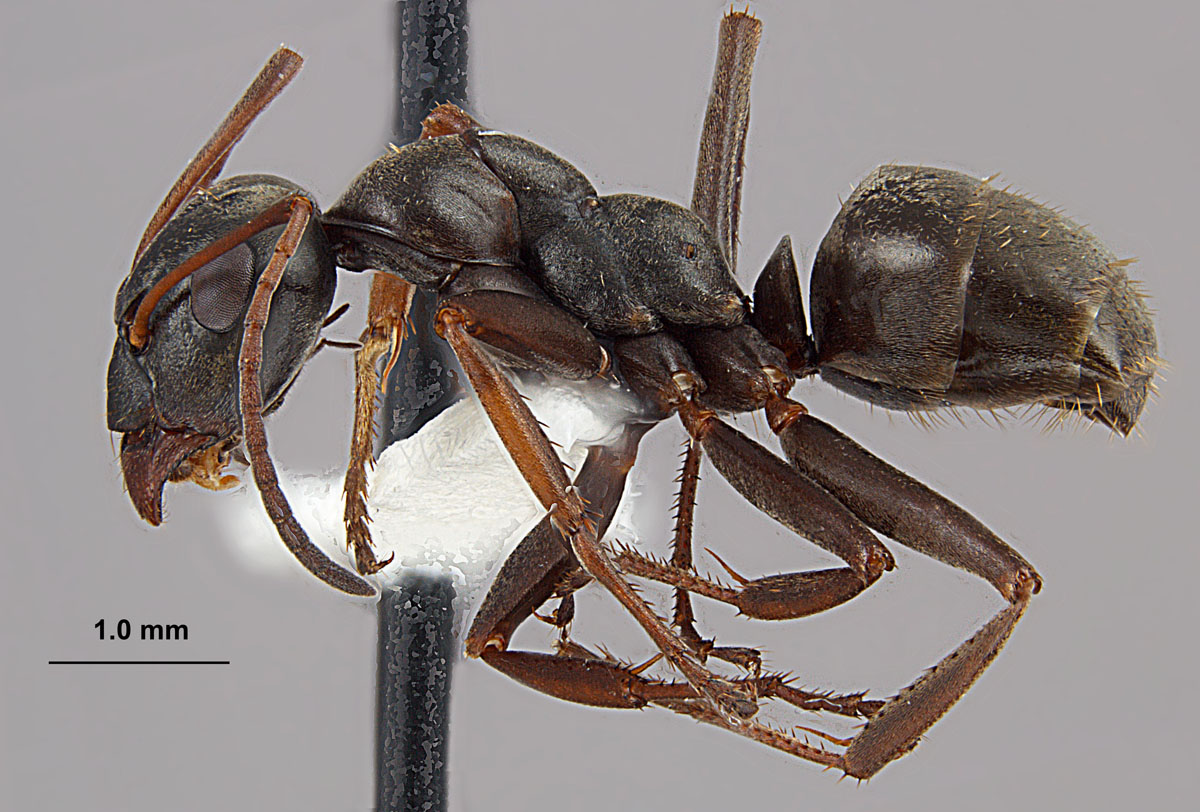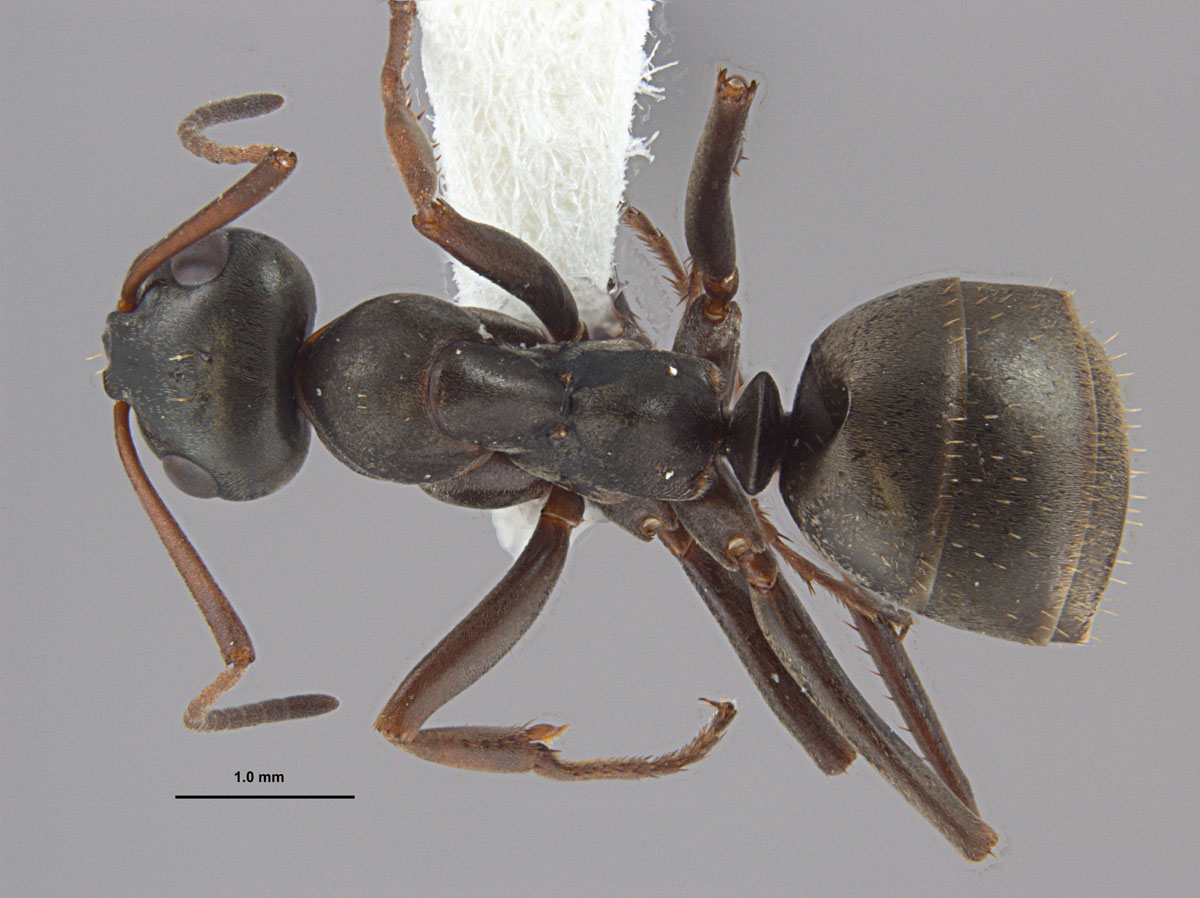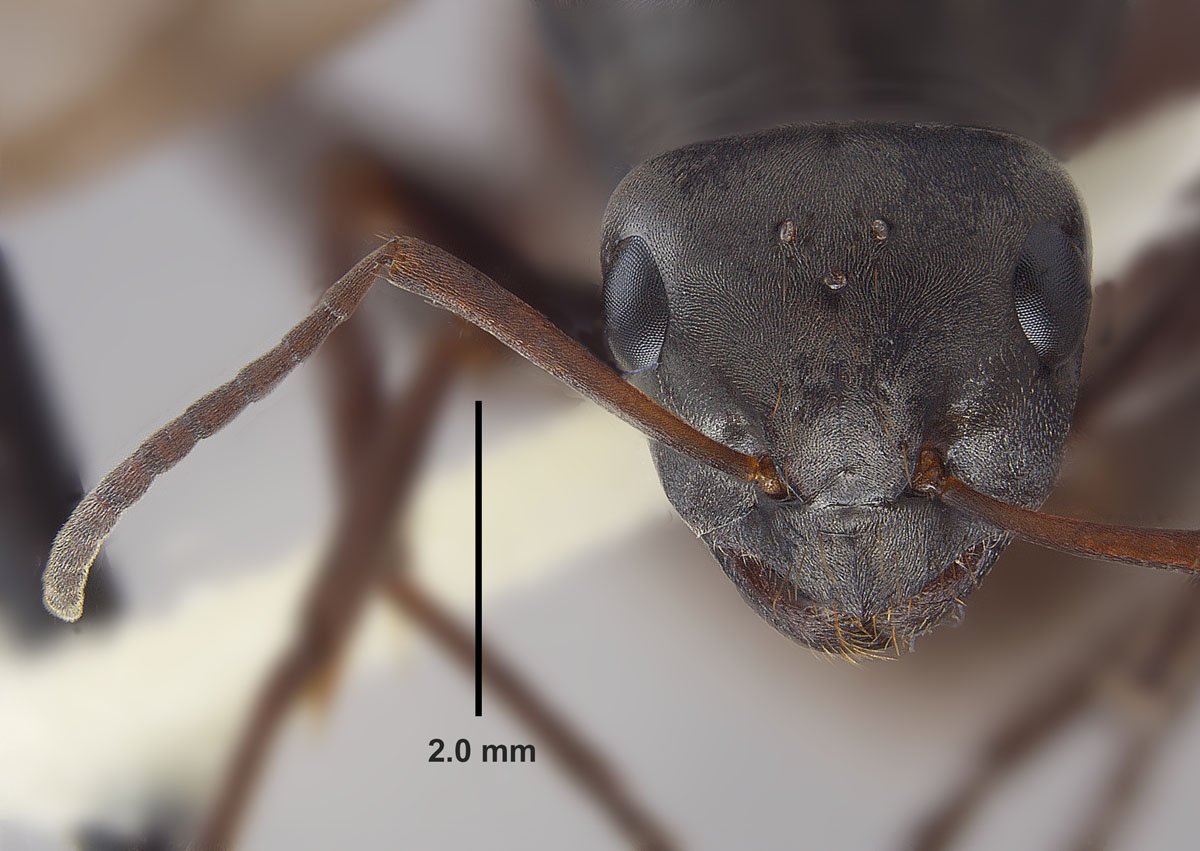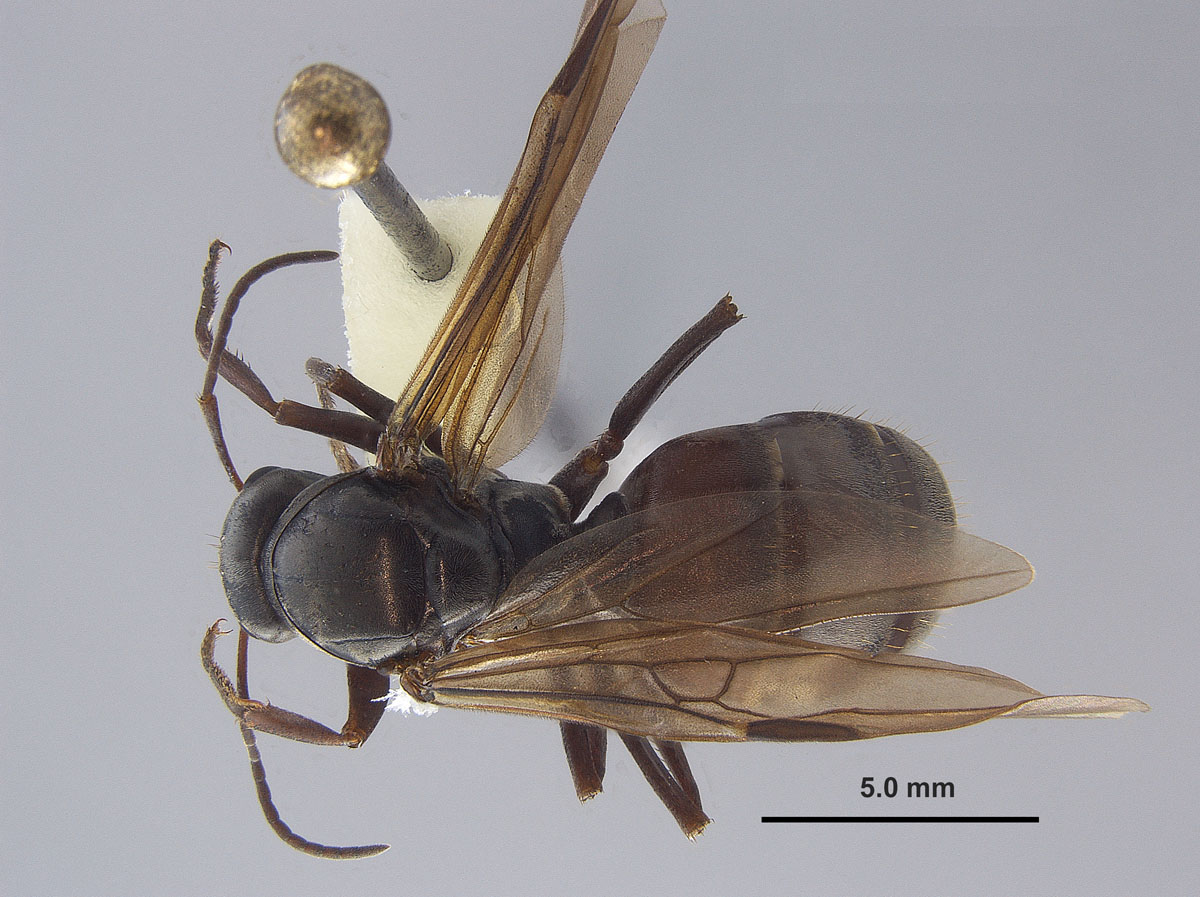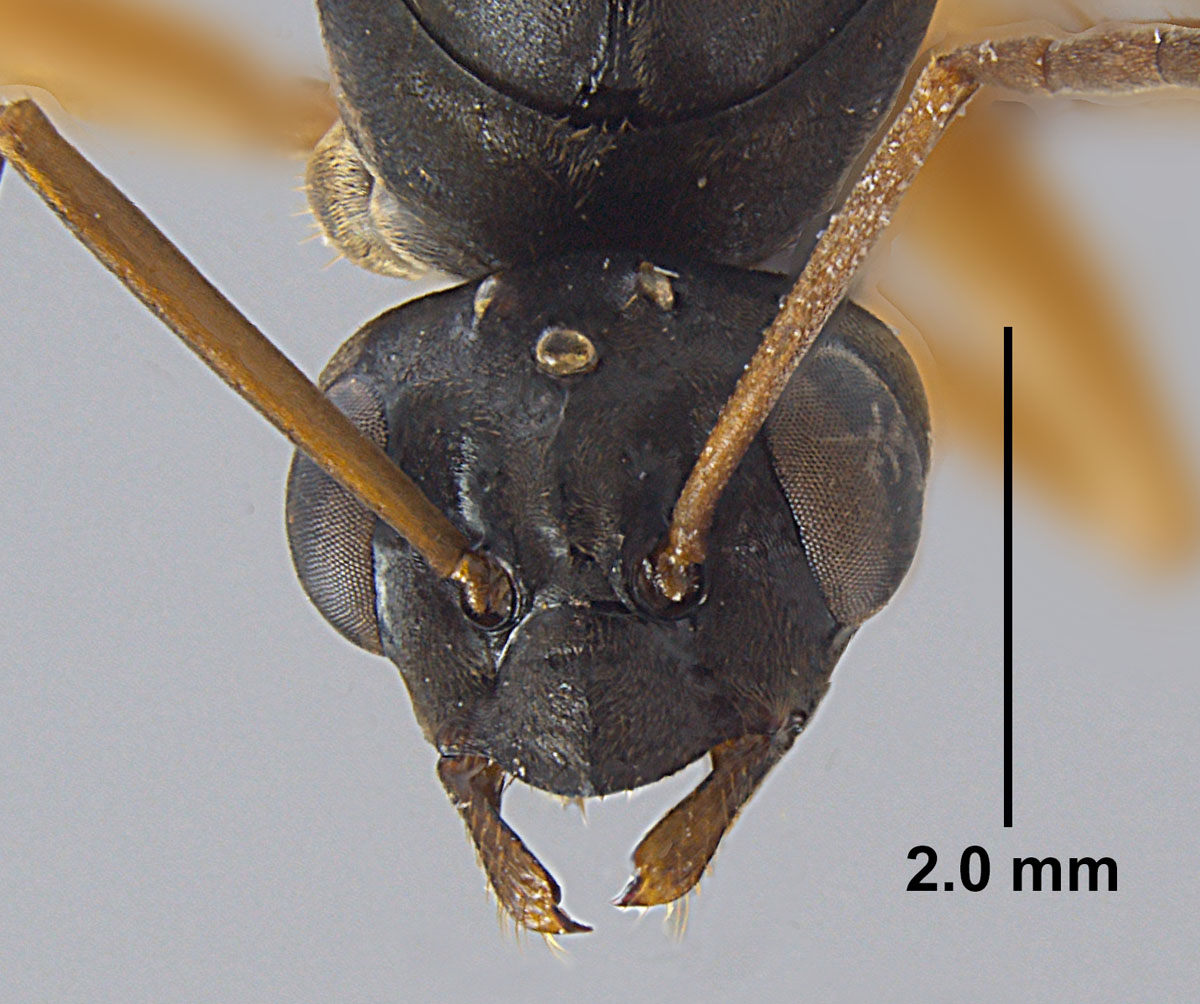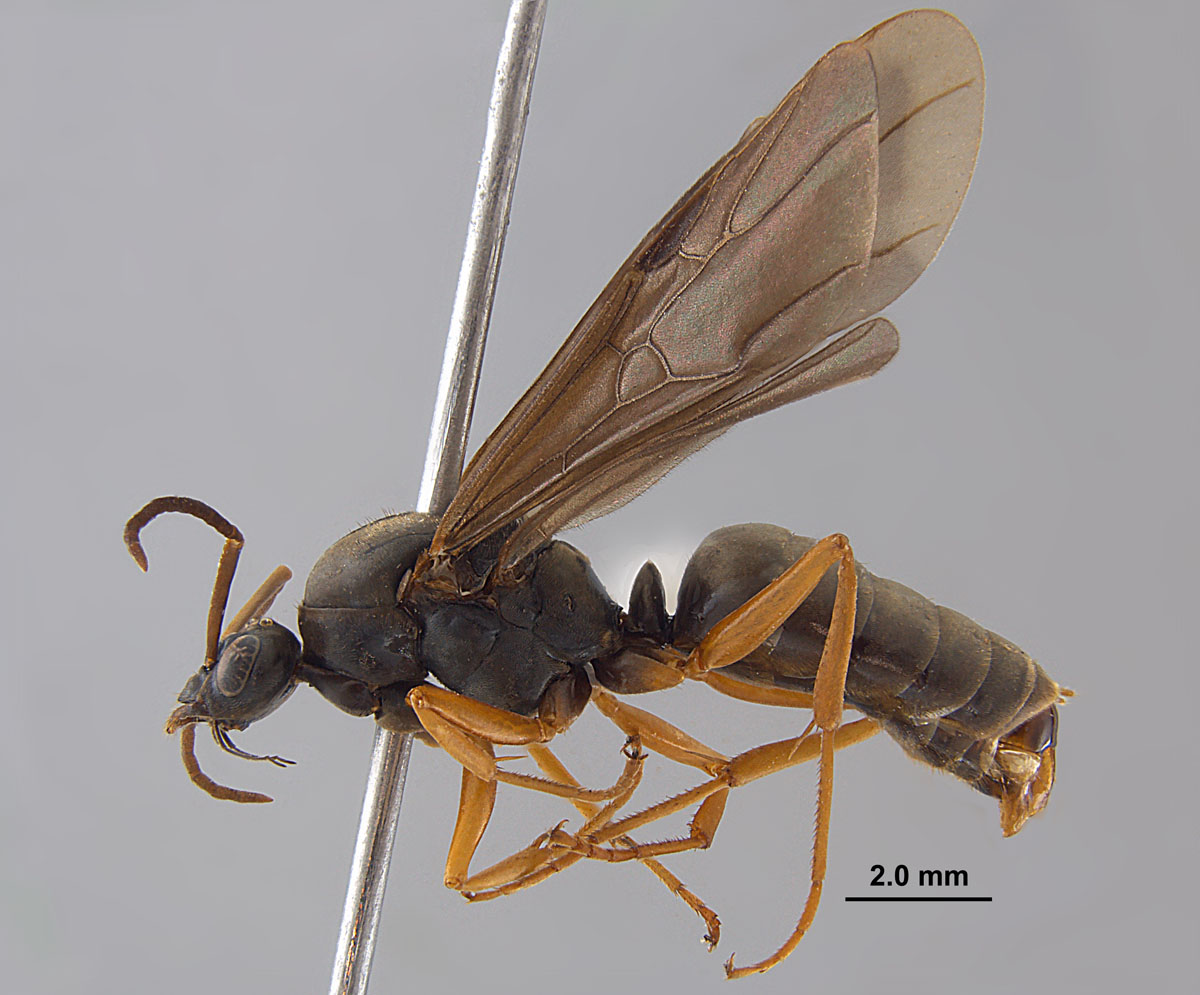Introduction
Formica subsericea, the black field ant, is a large, mound building species found in forested habitats in the eastern USA and Canada. Workers are not aggressive and when colonies are disturbed they quickly scatter.
Taxonomic History (Antcat.org)
Formica subsericea Say, 1836: 289 (q.m.) U.S.A. (Indiana). Nearctic.
Diagnosis
Formica subsericea is the only blackish colored Formica in the southeastern region. Other species are orangish red to bicolored orangish red with a black gaster.
Identification
Worker: Large (total length about 6.0–6.5mm); matte, blackish with brown appendages; several erect setae present on clypeal face and margin, paired setae on frontal lobe, paired setae just below posterior ocelli, erect setae lacking on dorsum of mesosoma, (occasionally 1–2 setae present), and gaster with numerous (but not dense) erect setae; pubescence on entire body fine, dense, giving a subtle velvety appearance; head slightly longer than wide; antenna elongate with 12 antennomeres, lacking club; eyes large, located posteriorly above the midpoint of head; three ocelli present; mesosoma distinctly and broadly depressed between promesonotum and propodeum; propodeum broadly rounded, lacking spines or other adornment; waist, with a single node; acidopore present.
Queen. Similar in appearance to workers, but larger (about 8.0–10.0 mm TL); mesosoma enlarged, with wings or wing scars; eyes enlarged, ocelli present.
Male. Large (about 10.0 mm TL), winged, blackish with scape and legs pale and funiculus dark gray, eyes greatly enlarged, ocelli present, 13 antennomeres, mandibles present, gaster elongate.
Biology and Economic Importance
Formica subsericea is widespread and common in open forests, grasslands, brushy fields, and other open habitats in the United States. It nests in the soil and colonies often extend above ground into mounds, which may be large.
Pest Status
This species does not sting and is not considered to be a pest species.
Distribution
U.S. Distribution: Eastern North America (antmaps.org and.MEM).
Southeastern U.S. Distribution: Found in all southeastern states (antmaps.org and MEM).
Acknowledgments
Funding for the ant work being done by the MEM in Alabama and Mississippi is from several sources including the National Institute of Food and Agriculture, United States Department of Agriculture, under Project No. MIS-012040, the Mississippi Agricultural and Forestry Experiment Station at Mississippi State University, with support from State Project MIS-311080, NSF Grants BSR-9024810 and DFB-9200856, the Tombigbee National Forest (U.S. Forest Service), the Noxubee Wildlife Refuge, Mississippi Natural Heritage Program Research Grant, USDA Forest Service Agreement No. 08-99-07-CCS-010, the William H. Cross Expedition Fund, and primarily by the USDA-ARS Areawide Management of Imported Fire Ant Project (2001-2014) and USDA-ARS Areawide Management Invasive Ants Project. Additionally, special cooperation has been provided by State Parks, National Forests, National Wildlife Refuges, the Natchez Trace Parkway, and from various private landowners in both Alabama and Mississippi. |


